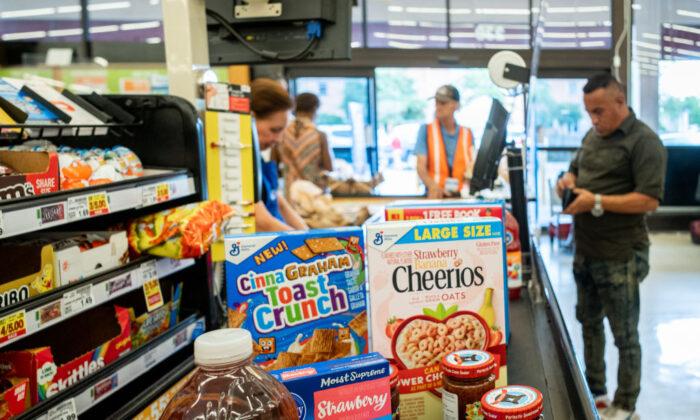Consumer prices rose 0.4 percent last month over August 2021, while rising 2.1 percent month over month.
This comes after prices fell 1 percent on an annual basis in July.
Fourteen out of 18 of the categories tracked by the DPI saw month-over-month price decreases in August.
Meanwhile, 12 out of the 18 categories in the report saw year-over-year price increases last month.
Americans spent at least $64.6 billion online in August, for a rise of 6.5 percent over last year, according to the report.
Consumers spent more in July, at roughly $73.7 billion, for a 20.9 percent increase over last year, after many retailers offered “Prime Day discounts that drove record sales for the retail industry overall,” according to Adobe.
These price increases have put online commerce back into the inflation zone, despite consecutive declines in online commerce and electronics,
Grocery prices skyrocketed 14.1 percent year over year, along with a jump in apparel and personal care items prices, but rose 1.1 percent month to month.
Many Americans have seen price inflation, particularly food, outpace the gains in wages this year, causing pain for households nationwide.
The cost of groceries have risen for 31 straight months, which still “remains the only category to move in lockstep with the Consumer Price Index on a long-term basis,” according to Adobe.
“The modest uptick we see in online prices for August was driven in large part by rising food costs that show no signs of abating, just as seasonal discounts in a category like apparel phased out through the end of summer,” said Patrick Brown, Adobe’s vice president of growth marketing and insights, in the August report.
Apparel costs in August rose 4.9 percent year over year, after falling for two months in a row due to massive discounts and back-to-school sales.
Personal care products shot up 2.7 percent year over year, its highest increase since March 2021.
Despite the jump in prices, the data from Adobe showed that consumer demand remained strong in August.
Electronics, on the other hand, fell 10 percent year over year, and the sector has declined consistently since December 2021, while the cost of computers fell by 12.6 percent.
Is Inflation Reaching Its Peak?
Adobe had been reporting 25 consecutive months of e-commerce inflation before the decline in July, as the post–pandemic economic shift to online commerce caused prices to rise.Consumer demand for e-commerce remains steady, and is likely to “keep prices elevated, especially for growing categories such as groceries, pet products, and other consumer staples,” said Brown.
Shoppers in 2022 have so far already spent $580 billion online, up from 8.9 percent from a year ago.
The markets are also expecting the August Consumer Price Index (CPI) report on Sept. 13 and the Producer Price Index (PPI) report on Sept. 14.
The two indexes are keenly observed because the Federal Reserve uses those widely viewed reports as the benchmark for their policy-rate decisions.
Investors predict that the central bank is looking toward raising interest rates by 75 basis points at next week’s Federal Open Market Committee (FOMC) on Sept. 20–21, especially after the European Central Bank hiked interest rates by a similar amount on Sept, 8.
The Adobe Digital Price Index is based on Adobe Analytics data from more than one trillion visits to retail sites, spanning over 100 million SKUs (stock-keeping units) across 18 product categories.





